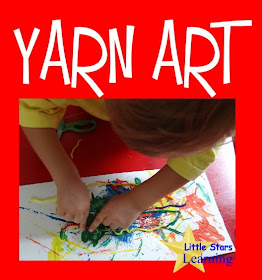When my oldest was 18 months, while visiting with my parents, we realized that he had been too quiet for too long. We found him with a phillips head screwdriver methodically taking apart everything he could reach.

We told him he needed to put everything back together, and he accurately put every screw back into where it belonged. Door hinges, door knobs, metal floor thresholds, the back on the remote, some of his electronic toys, etc. He had devised boosters where needed to get up to where he wanted, some of them quite inventive. We watched him reassemble each one.
It wasn't the first time that my little guy had shown an innate NEED to figure out how the world works around him. So we provided him with a variety of things he COULD take apart and put back together as he chose and proceeded to supervise him closely, offering a straight screwdriver when needed.
 |
| Little bro taking after big bro! |
Yes, screws are choking hazards, yes, batteries were uncovered that could have harmed him, yes, he exposed electrics that could have harmed him, yes, he could have poked his eye out with a screwdriver.
But it was what he was led to do.
It wasn't the first time that my little guy had shown an innate NEED to figure out how the world works around him. So we provided him with a variety of things he COULD take apart and put back together as he chose and proceeded to supervise him closely, offering a straight screwdriver when needed.
While I had supported him in every quest to learn, this was truly the moment when I knew, looking into his serious little eyes, that if I took this opportunity to explore away from him, a part of him would be lost. Possibly forever. I've had that gut feeling many times through the years, and unfortunately, along the way, especially when he was in public school, pieces of him WERE lost because he didn't fit the mold.
I think schooling at home, beyond the support of traditional baby-hood learning, begins when a parent recognizes that NEED within a child to explore, know, experience, and truly UNDERSTAND beyond their capabilities or environment.
All children have this innate desire, some more so than others. But ALL children have their passions, whether that be trucks, trains, princesses, horses, machines, or nature. Finding that subject of passion sometimes takes exposure through books and outings.
For instance, my cousin's 3-year-old just went through an animated dinosaur exhibit this last weekend. Now she wants to know everything possible about dinosaurs.
Her parents bought her a coloring book from the gift shop and are picking out library books and hunting down video on dinosaurs. She is advanced, most likely gifted, as both her parents are, so they can continue to add resources applicable to her interest and development until her interest wanes, if it ever does.
THIS IS HOMESCHOOLING!!

Depending on the family, this flow of teaching may remain in "project-based" exploration, become more child-led with maturity and be termed "un-schooling," or morph into more organized set curriculum.
My oldest indicated even in preschool that organized schooling was not for him. His teacher said that he would leave the class. Not physically, but mentally, he'd fade out and they had trouble getting him reconnected. She said he would get bored and simply go away. I asked him where he went in his head. He said, "My happy place. School makes me sad."
While I wanted to homeschool, knew I NEEDED to homeschool my 2e gifted child, because the school system quickly began robbing him of so many things and shutting him down from the world, I couldn't work out the logistics.
We struggled with public school for years, trudging nightly through homework he felt tortuously repetitive and boring ,until I would give in and let him work on what he truly want to work upon, usually some form of science, often physics, which I facilitated...homeschooling in the evenings. He learned more, retained more, and was HAPPY learning this way.
When he finally was able to homeschool, it was as if the sun shone on his soul for the first time in years. We could work around his good/bad days. He could race through what he already knew, spend some extra time on anything he struggled with, and be done with his day with plenty of time to explore his passions.
The youngest has only been in public school for one grade, fourth, and it didn't go well. His passion is coding and programming, subjects he would not be exposed to through the school system, at his level, until college. His reading, math, and science skills are advanced not due to his intellect, but due to his profound need to constantly learn more, to create better programs, and push his capabilities.
Homeschooling DOESN'T begin at a desk or with a worksheet.
It all starts early, with that first moment that a parent sees a driving need to learn within their child. When a parent makes the choice to provide inspiration, motivation, and means to open the door to knowledge.
 |
| We read a lot of worm books that week! |
It doesn't take a lot of time or money, unless you have them to spare and choose to do so. Free resources are readily available and there is a multitude of support within most communities, and if not yours, then others that you can outreach. If you are called to support your child in their learning, find a way.
Coop with other homeschooling parents if you need to work. Homeschooling can be accomplished at any time you can make available, and children are often their own best teachers if given resources to explore.
Our vet has a 12 year old homeschool girl that shadows their vets for 4 hours 3 times a week. He says she knows more than most 2nd year veterinary students. That's her passion. If you seek resources, you will be surprised how the community will provide.
There is a reason "JUST DO IT!" is such a popular slogan...
Tags: homeschooling, gifted, education, home schooling, home , school, passion, chi
, school, passion, chi
The Gifted Homeschool Forum is keeping a running list of the other “Homeschooling: Where & How to Begin” links as they are submitted.
Below you will see that ANY PARENT can homeschool successfully...
Below you will see that ANY PARENT can homeschool successfully...














